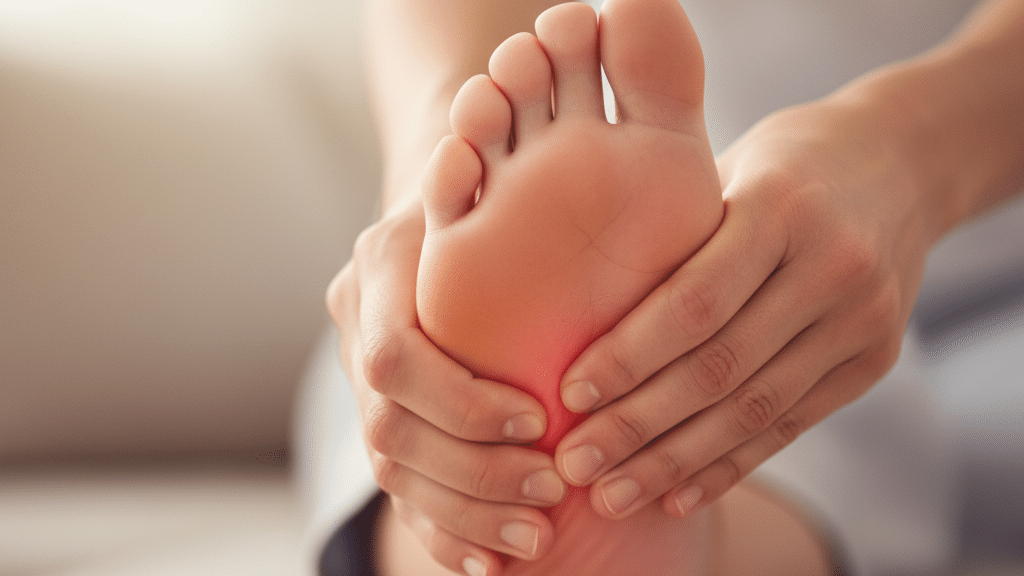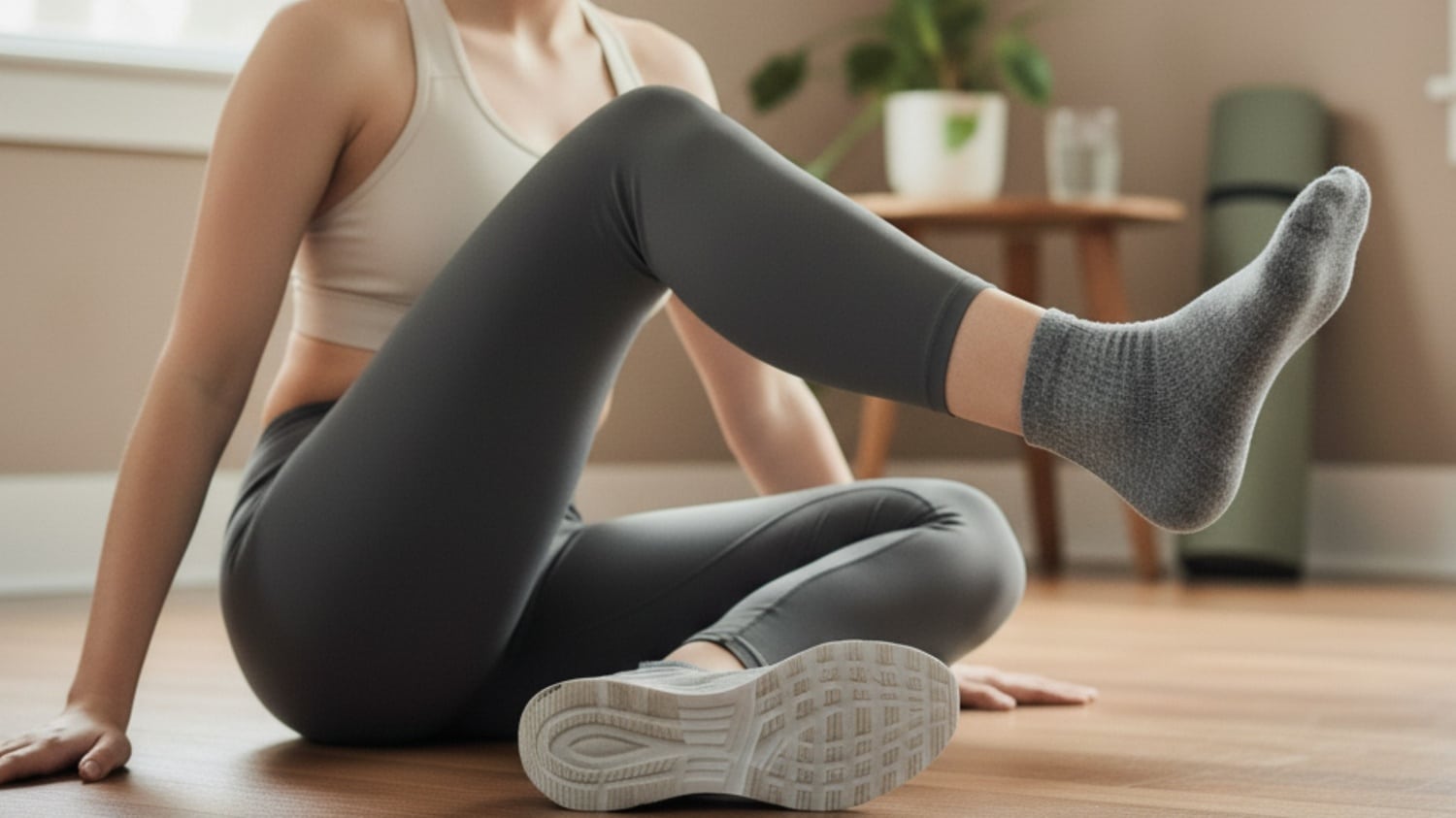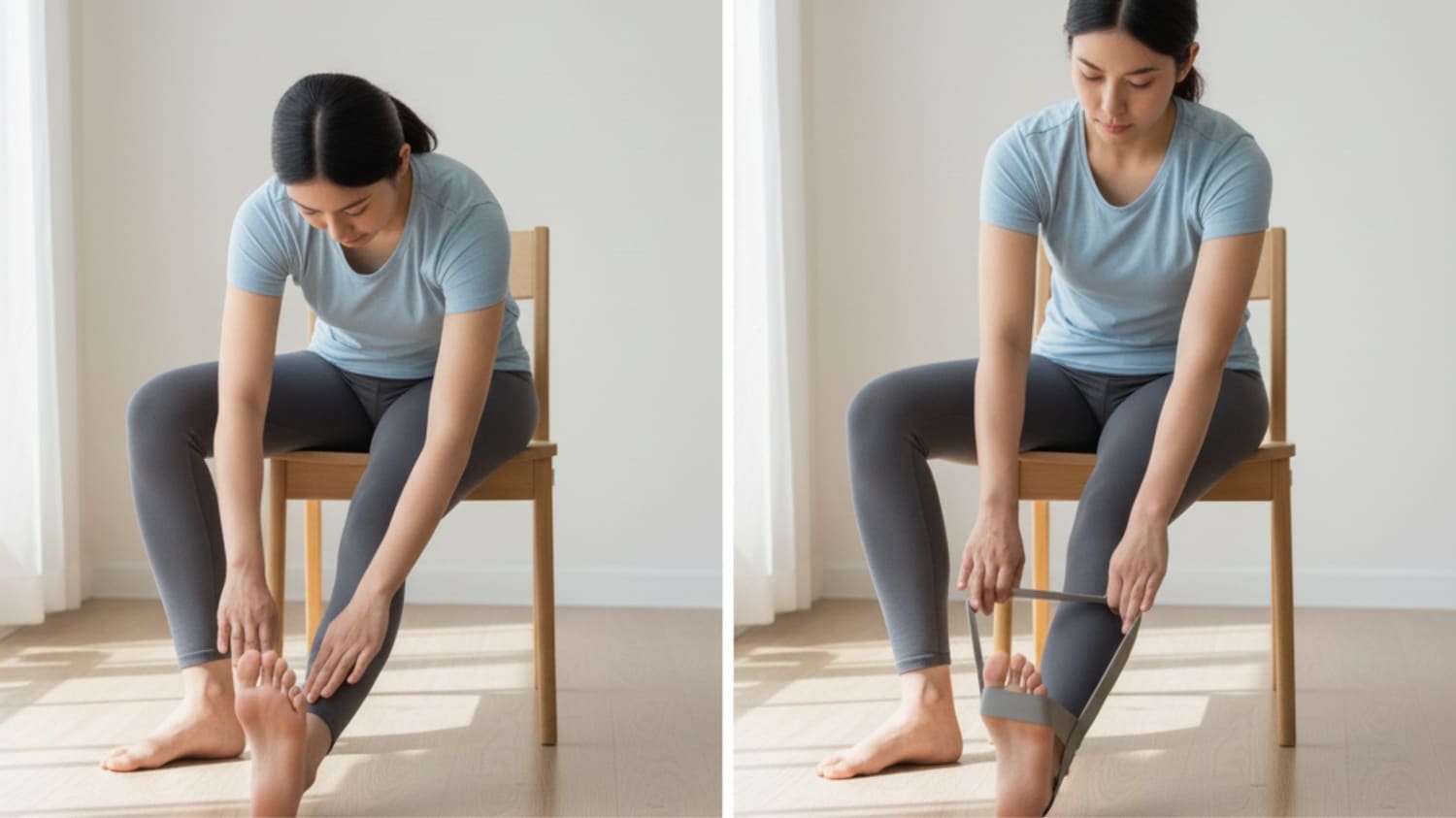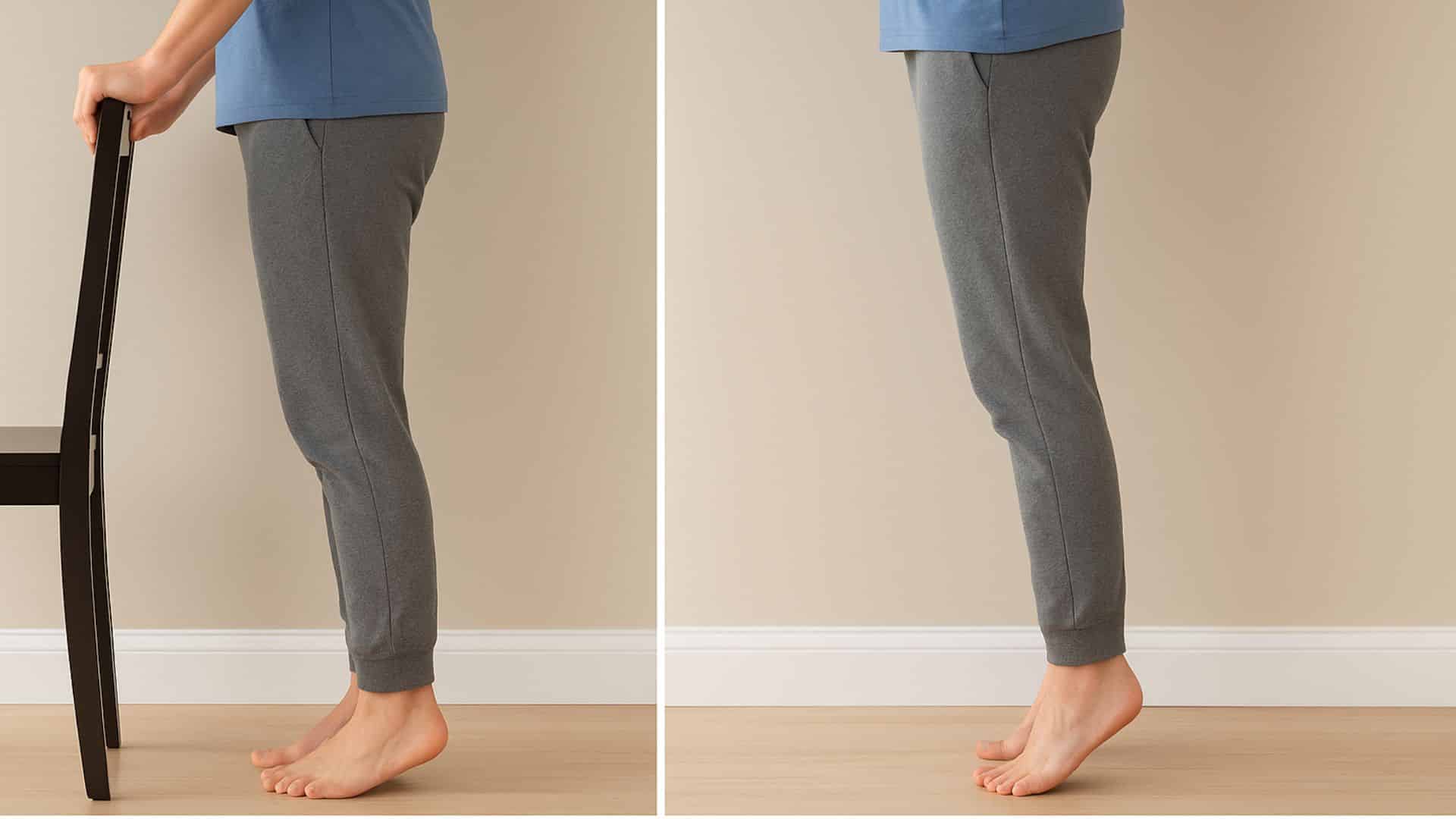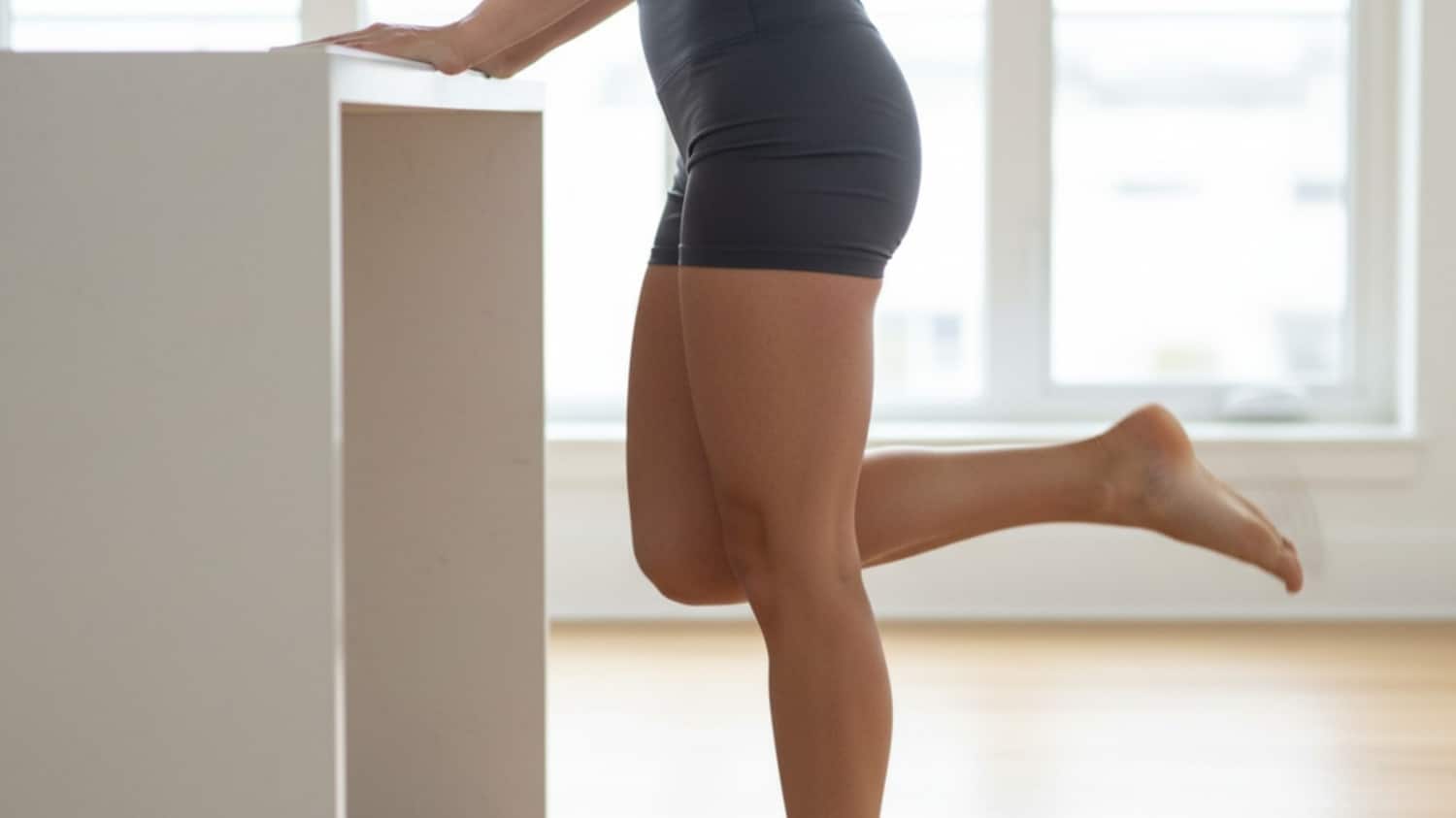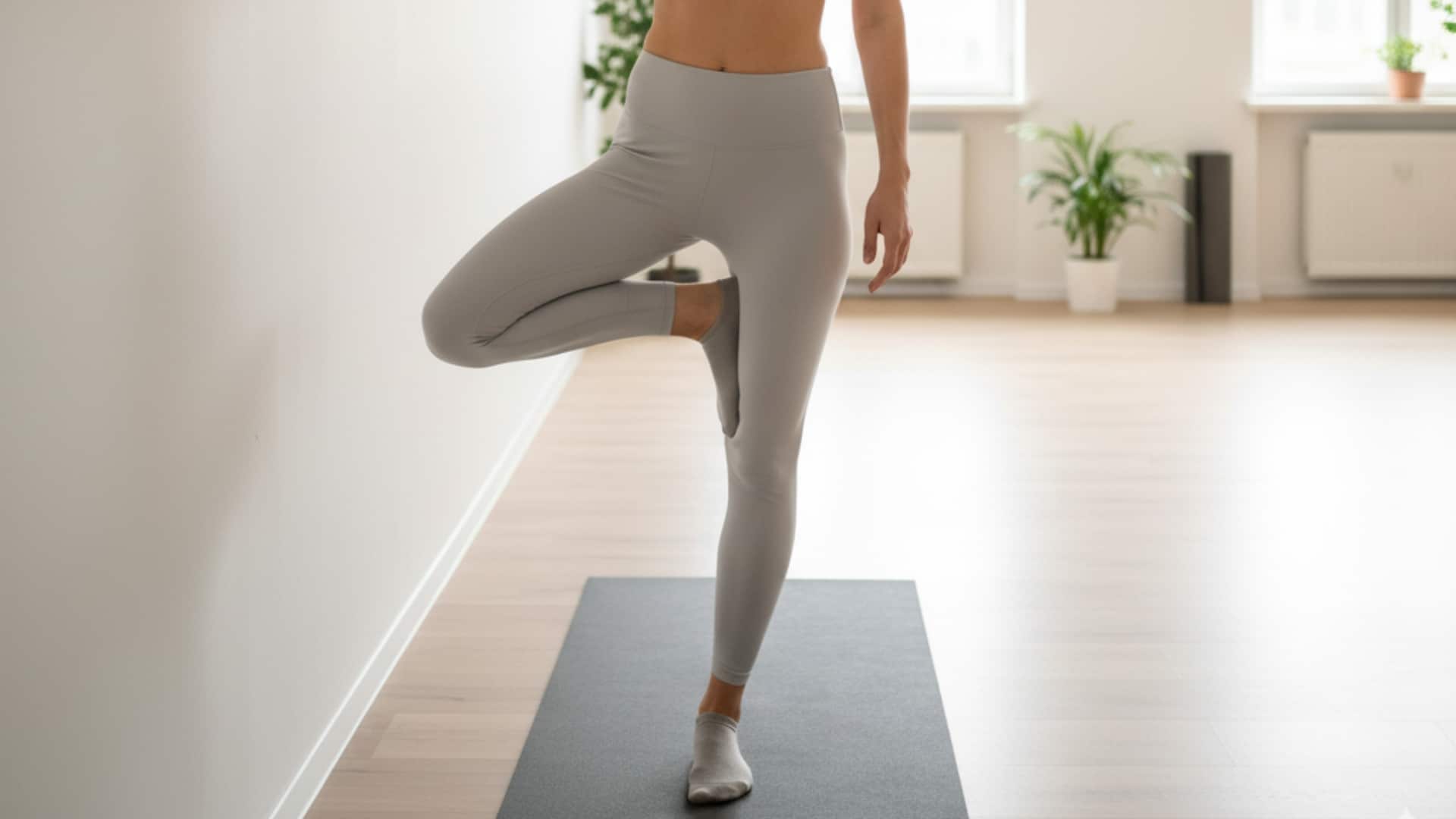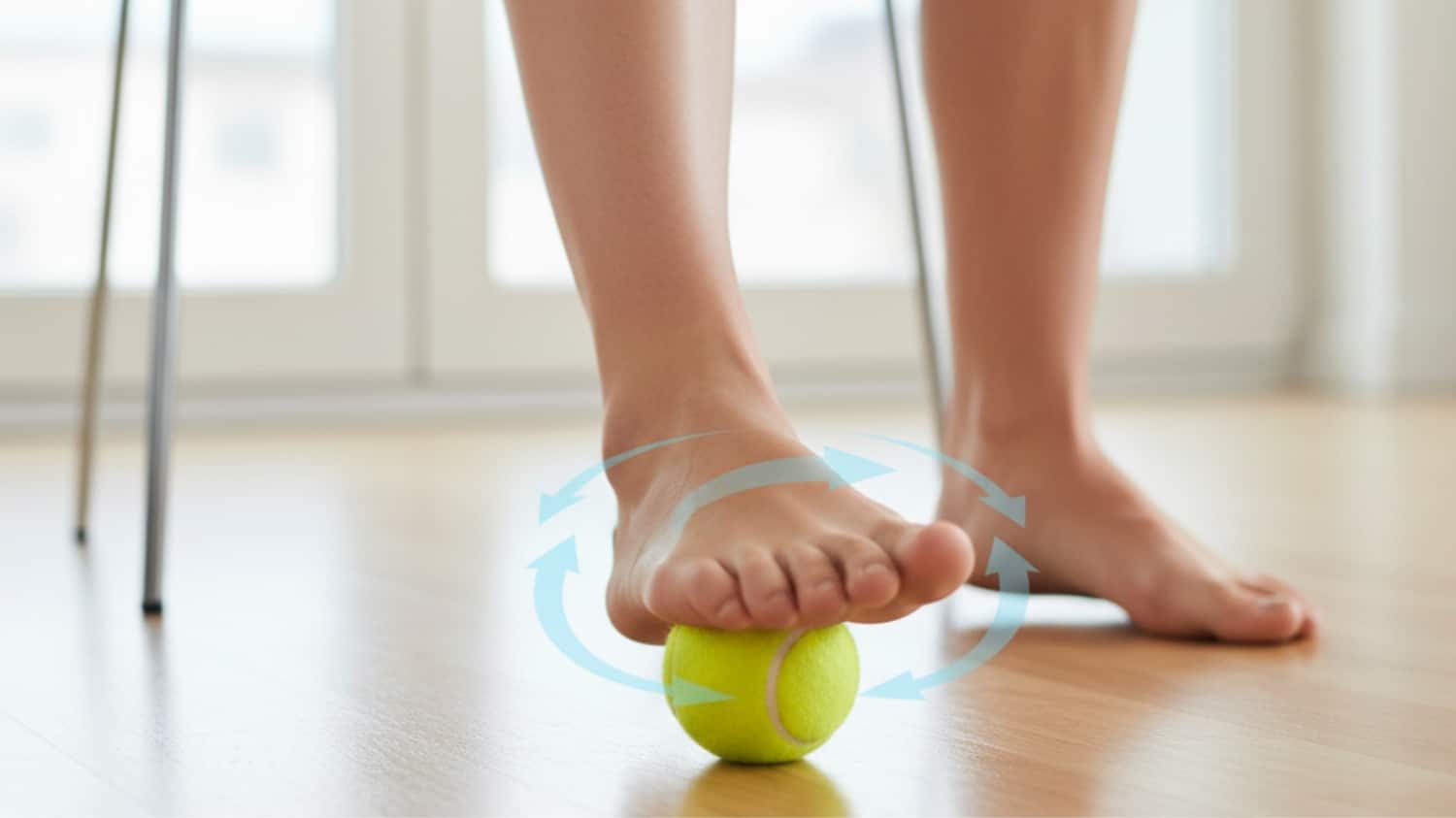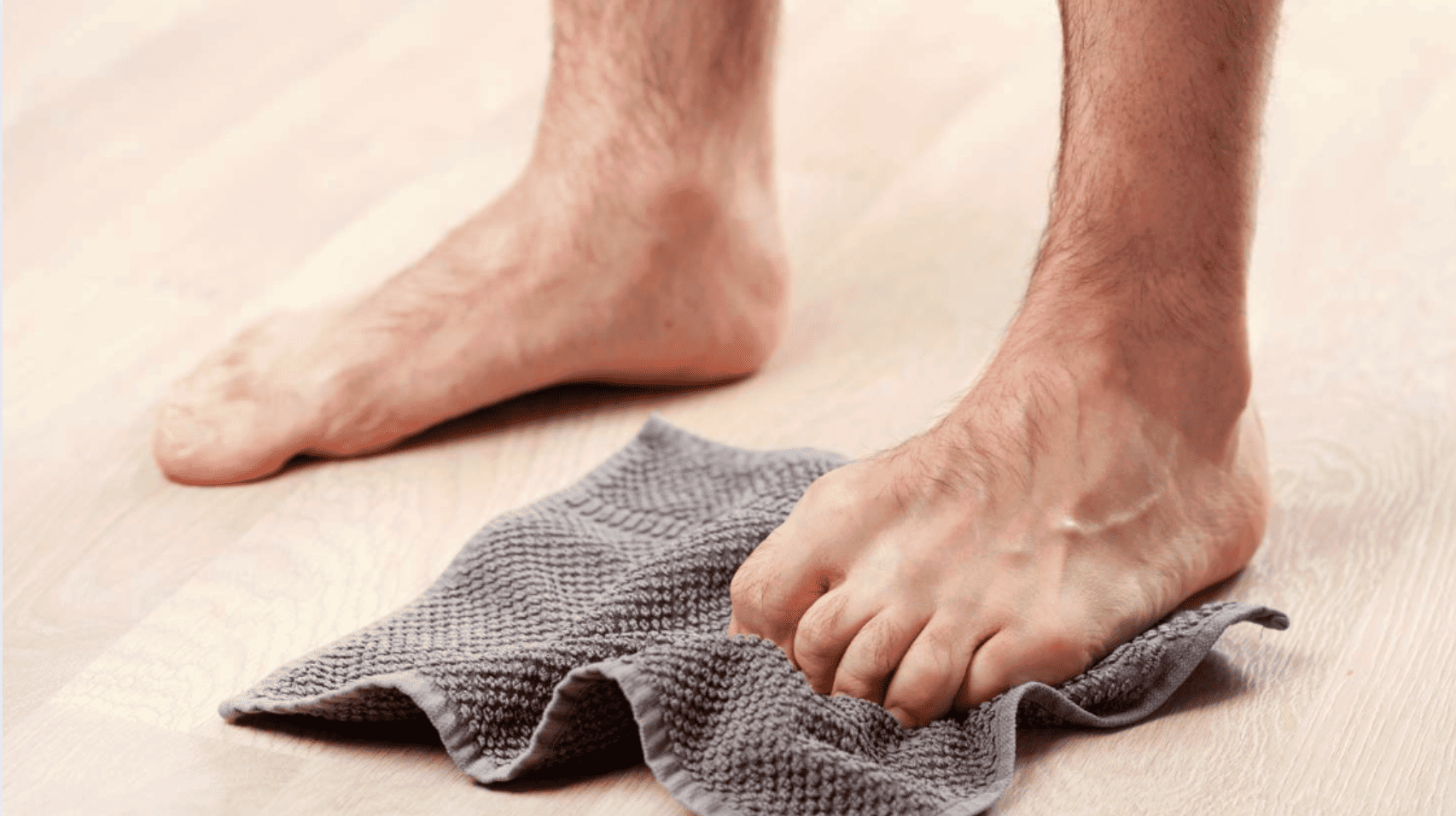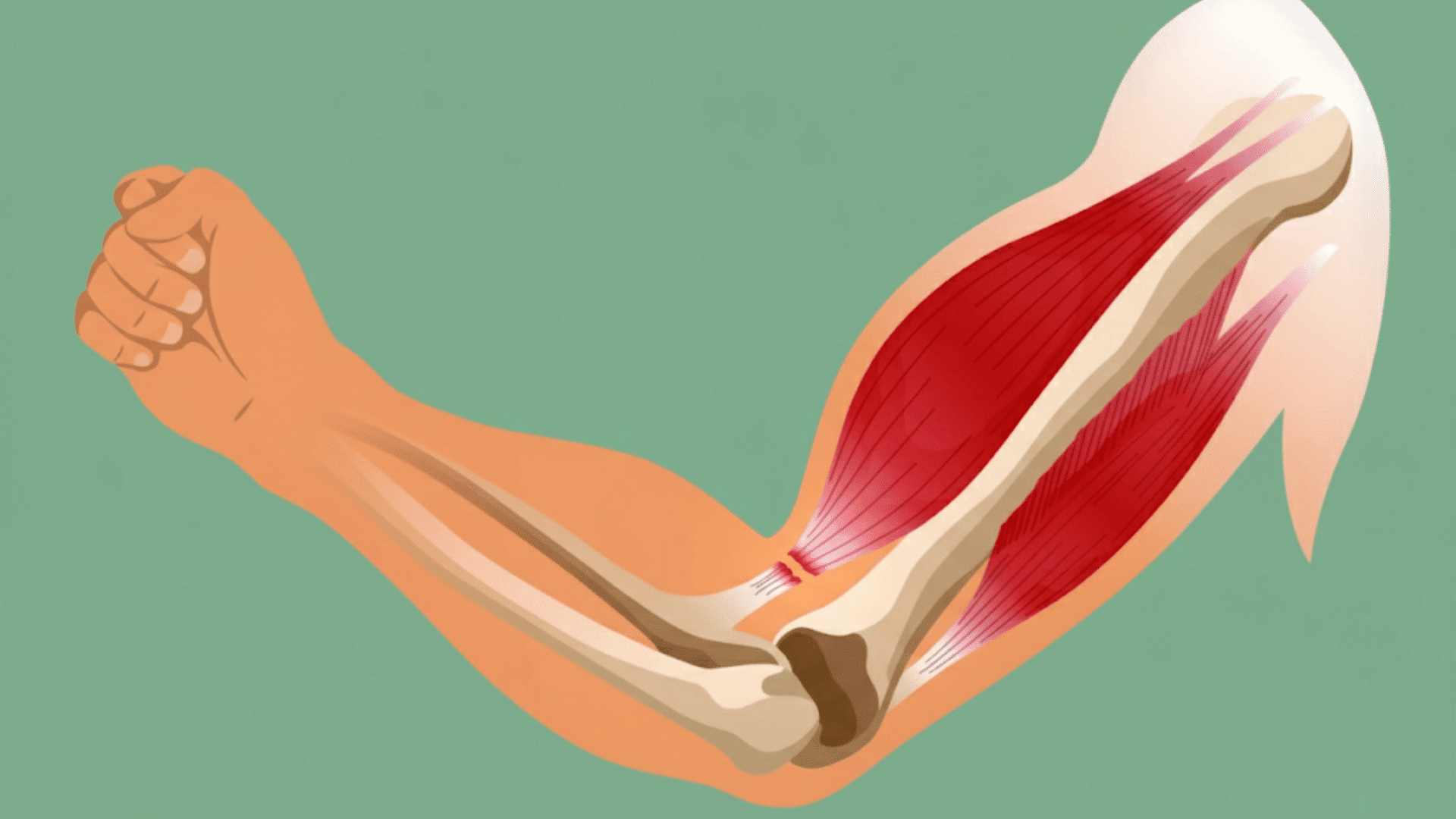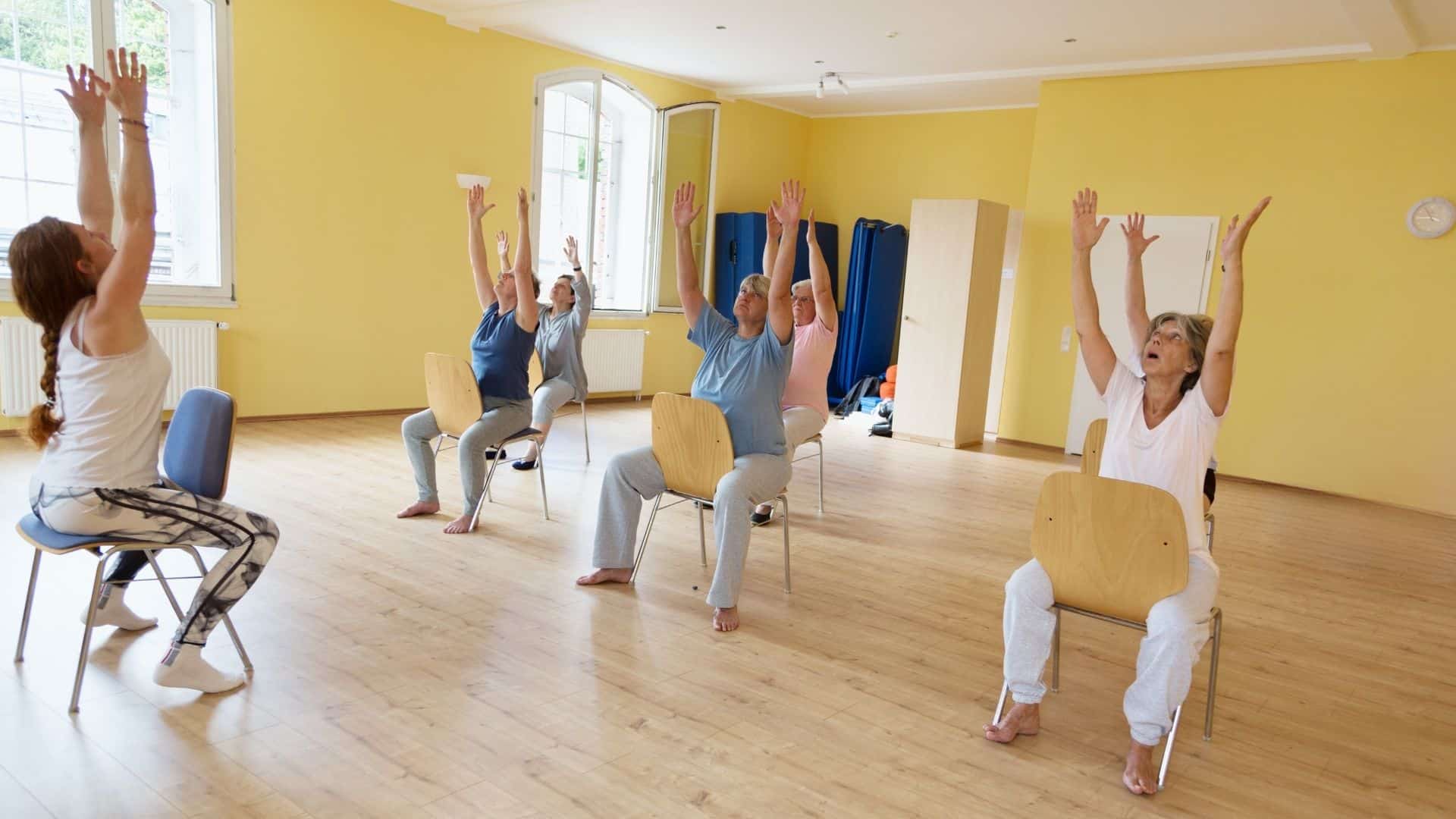Struggling with burning feet at night or numbness that makes walking painful? These symptoms often point to peripheral neuropathy, a condition affecting millions globally, especially in the legs and feet.
While this condition can disrupt daily activities, there are practical ways to manage its effects.
This blog presents straightforward exercises designed to support nerve health, improve circulation, and strengthen muscles in your legs and feet.
With regular practice, these movements can help alleviate discomfort, improve balance, and boost your confidence while walking.
Incorporating these exercises into your daily routine may lead to better mobility and a more comfortable life overall.
What Is Peripheral Neuropathy?
Peripheral neuropathy is nerve damage that primarily affects the legs and feet, leading to symptoms such as tingling, numbness, sharp pain, muscle weakness, and poor balance. The underlying causes vary but commonly include:
- Diabetes (diabetic neuropathy)
- Chemotherapy treatments (chemotherapy-induced neuropathy)
- Idiopathic causes (unknown origin)
Exercise plays a vital role in managing these symptoms by promoting nerve healing, improving circulation, and strengthening muscles.
How Do Exercises Help With Neuropathy in Legs and Feet?
Regular exercises provide important benefits for neuropathy by enhancing nerve health and improving strength, circulation, and pain management in your legs and feet:
1. Improves circulation – Better blood flow nourishes damaged nerves
2. Builds strength – Stronger muscles provide stability and support
3. Reduces pain – Regular movement may decrease nerve-related discomfort
These proven movements can help you regain confidence in walking and reduce daily symptoms. Start slowly and stay consistent for the best results.
How Often Should You Do Neuropathy Exercises?
Start with 10-15 minutes each morning or evening, maintaining consistency over time to achieve optimal nerve health improvement.
Practice these exercises for neuropathy in legs and feet daily for the best results.
Best Exercises for Neuropathy in Legs and Feet
Simple, low-impact movements that can help reduce nerve pain and improve circulation in your lower extremities.
1. Ankle Circles
Begin with this easy movement to gently activate your ankle and foot muscles.
Sit comfortably and lift one foot slightly. Rotate your ankle slowly in circles, both directions.
You can also draw alphabet letters with your foot while moving your ankle and toes.
Benefits:
- Increases blood flow
- Maintains joint mobility and flexibility
- Helps with nerve stimulation
2. Hamstring and Calf Stretch
Stretching plays a crucial role in managing neuropathy. Start with these easy moves.
Hamstring Stretch: Sit toward the edge of a chair with one leg extended. Keep your knee mostly straight and lean forward from your hips until you feel a gentle stretch behind your thigh. Hold 10-30 seconds.
Calf Stretch: Using a towel or belt around your foot, pull your toes toward you while keeping your knee straight and your foot flat on the ground. Feel the stretch in your calf muscle. Hold 10-30 seconds.
Benefits:
- Reduces muscle tightness that worsens neuropathy symptoms
- Improves flexibility and range of motion
- Decreases muscle spasms and cramping
3. Toe and Heel Raises
Activate and tone your calf and foot muscles with this easy movement.
Hold onto a counter for support. Rise up onto your toes, then lower down. Next, lift your toes and balance on your heels.
Alternate between these positions for 10-15 repetitions.
Benefits:
- Activates calf and foot muscles
- Improves balance and ankle stability
- Strengthens lower leg muscles
4. Knee Bends with Ankle Pumps
This exercise targets both your leg muscles and ankle mobility to improve overall movement.
Stand with support and lift one foot behind you by bending your knee. Pump your ankle up and down several times, then lower your leg.
Switch sides for 10-15 total repetitions.
Benefits:
- Strengthens quadriceps and hamstring muscles
- Improves nerve conduction
- Reduces muscle stiffness
5. Single-Leg Balance
This simple balance exercise helps strengthen your core and lower body control.
Stand near a wall for safety. Lift one foot off the ground and balance on the other. Start by holding support, then try letting go for a few seconds.
Work up to 10-20 seconds per leg.
Benefits:
- Improves balance and coordination
- Improves proprioception affected by neuropathy
- Strengthens core stabilizing muscles
6. Ball Rolling
Here’s a simple way to ease tension in your feet. Place a tennis ball on the ground and roll your foot over it in different directions.
Spend 2-5 minutes on each foot.
Benefits:
- Provides therapeutic massage for the foot muscles
- Offers gentle nerve stimulation
- Improves sensory feedback
7. Towel Scrunches
Work on your toe strength with this easy movement. Put a small towel on the floor. Using only your toes, try to pick up and scrunch the towel.
Start with 5-10 repetitions to avoid cramping.
Benefits:
- Strengthens intrinsic foot muscles
- Improves nerve-muscle communication
- Enhances toe dexterity and control
I’d like to give credit to CancerRehabPT for their informative video, which serves as a valuable reference for this guide.
Safety Tips and Precautions
Before you begin any exercise routine, keep these safety tips in mind to protect your health and prevent injury.
- Get medical clearance first – Consult your doctor before starting, especially with severe neuropathy or open wounds.
- Wear proper footwear – Use supportive athletic shoes with non-slip soles on soft surfaces, such as carpet or mats.
- Start slowly and progress gradually. Begin with 5-10 minutes daily and increase by 2-3 minutes per week.
- Stop immediately if you experience warning signs, such as sharp pain, increased numbness, dizziness, or severe fatigue, as these require rest.
- Exercise in a safe environment – Use well-lit areas with support nearby and remove tripping hazards.
Monitoring Your Progress
You should notice improved balance, reduced stiffness, and better sleep within weeks. Mild muscle soreness, lasting 1-2 days, is normal and indicates that your muscles are responding positively.
Stop exercising immediately if you experience:
- Sharp, shooting pain during or after exercise
- Increased numbness or complete loss of sensation
- Dizziness, lightheadedness, or loss of balance
- Severe fatigue lasting more than 3 days
- New areas of tingling or burning pain
- Symptoms worsen despite 2-3 weeks of consistent practice
Conclusion
Managing neuropathy symptoms doesn’t require expensive equipment or complicated routines.
With consistent daily practice of these exercises for neuropathy in legs and feet, many people experience significant improvements in pain, balance, and mobility within weeks.
Start slow, listen to your body, and gradually build your routine. Your nerves need gentle, consistent stimulation to heal and function better.
Don’t let neuropathy control your life – take action today!
Frequently Asked Questions
What Exercises Should You Avoid with Peripheral Neuropathy?
Avoid high-impact activities, such as jumping and running on hard surfaces, exercises without proper support, and any movements that cause sharp pain or increased numbness.
Should You Walk a Lot for Neuropathy?
Yes, but start slowly with short distances. Walking improves circulation and nerve health, but avoid uneven surfaces and always wear supportive shoes.
Does Neuropathy Make You Pee?
Neuropathy may affect bladder nerves, causing frequent urination or incontinence. While not always linked, managing symptoms with exercises for neuropathy in the legs and feet helps.

